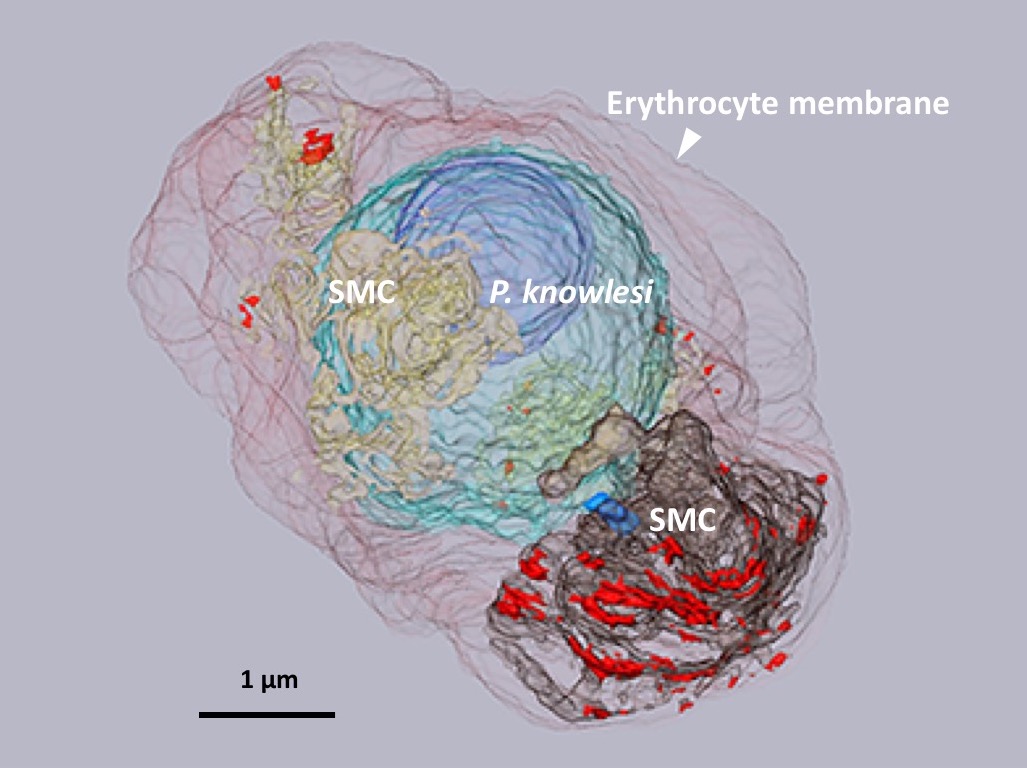Morphology of primate malaria parasite visualized by serial-block-face scanning electron microscopy
Malaria is an infectious disease found in subtropical and tropical regions, with approximately 700,000 deaths annually reported. Malaria parasites causing malaria are known to parasitize red blood cells of vertebrates including humans via mosquitoes. Human malaria parasites such as Plasmodium falciparum, which are susceptible to severe symptoms in humans, have been well studied and the development of vaccines is also progressing. On the other hand, the emergence of primate malaria, a zoonotic infection, hinders the goal of eradicating malaria at present. The life style has not been almost clarified so far.
In this study, we investigated the morphological changes of erythrocytes infected with a primate malaria parasite, Plasmodium knowlesi, using a serial-block-surface scanning electron microscopy (SBF-SEM). In human malaria, it is known that infected protozoa release a membrane-like structure, called Maurer's clefts (MC), into erythrocyte cytosol, which play a role of transferring the proteins necessary for protozoal proliferation to the periphery of erythrocyte. This time we discovered that a membrane-like structure named Sinton Mulligan's clefts (SMC) formed in the erythrocyte cytosol by the primate parasite corresponds to MC. Furthermore, SMC found that it has a plate-like structure with swollen edges, reminiscent of the function of the Golgi apparatus.
Our results not only elucidated the structure essential for the growth of primate parasites but also greatly suggested drug discovery development for prevention of infection and control of protozoa.

Collaborative Researchers
Miako Sakaguchi, Osamu Kaneko (Institute of Tropical Medicine, Nagasaki University, Japan)
Funding
JSPS Grants-in-Aids for Scientific Research, Japan
National Bio-Resource Project at Primate Research Institute, Kyoto University from Agency for Medical Research and Development (AMED), Japan
Cooperative Study Program of National Institute for Physiological Sciences, Japan to MS.

